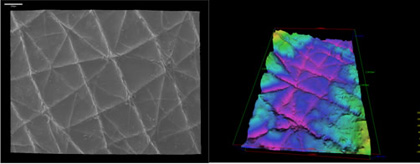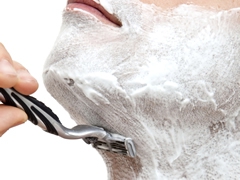You are here: Home » Insight hub » Case Studies » Topographical Surface Analysis Helps Skin Care Product Claims
Topographical Surface Analysis Helps Skin Care Product Claims
Lucideon is able to offer in vitro quantified topographical analysis of skin using a combination of 3D-Scanning Electron Microscopy and Surface Metrology.
The assessment can be useful to look at the effects of facial shaving, moisturisers, hair removal methods etc on skin topography by measuring before and after treatments. The resulting quantified data can then be used for product defence, new product development and product claim support.
The Challenge
Lucideon (which was at the time called Ceram) was asked to compare shaving treatments and their effect on skin texture.
What We Delivered
The measurements were carried out on silicone replicants which can facilitate accurate replication on a sub-micron scale. The silicone replicants are fast setting thixotropic materials easily applied with no apparent residue after application.
SEM was used to produce a 3D-SEM image of a male skin replicant following shaving; this was then processed using the Surface Metrology programme to produce mean surface roughness data.

Value to the Client
We were able to measure and quantify the effect of the client's treatment. This data was then used in their marketing and sales literature to support product claims.
